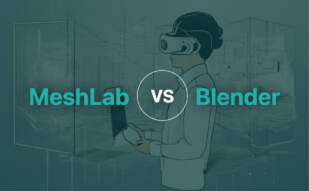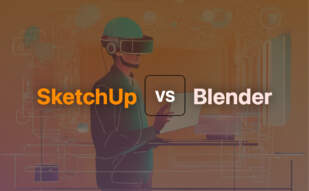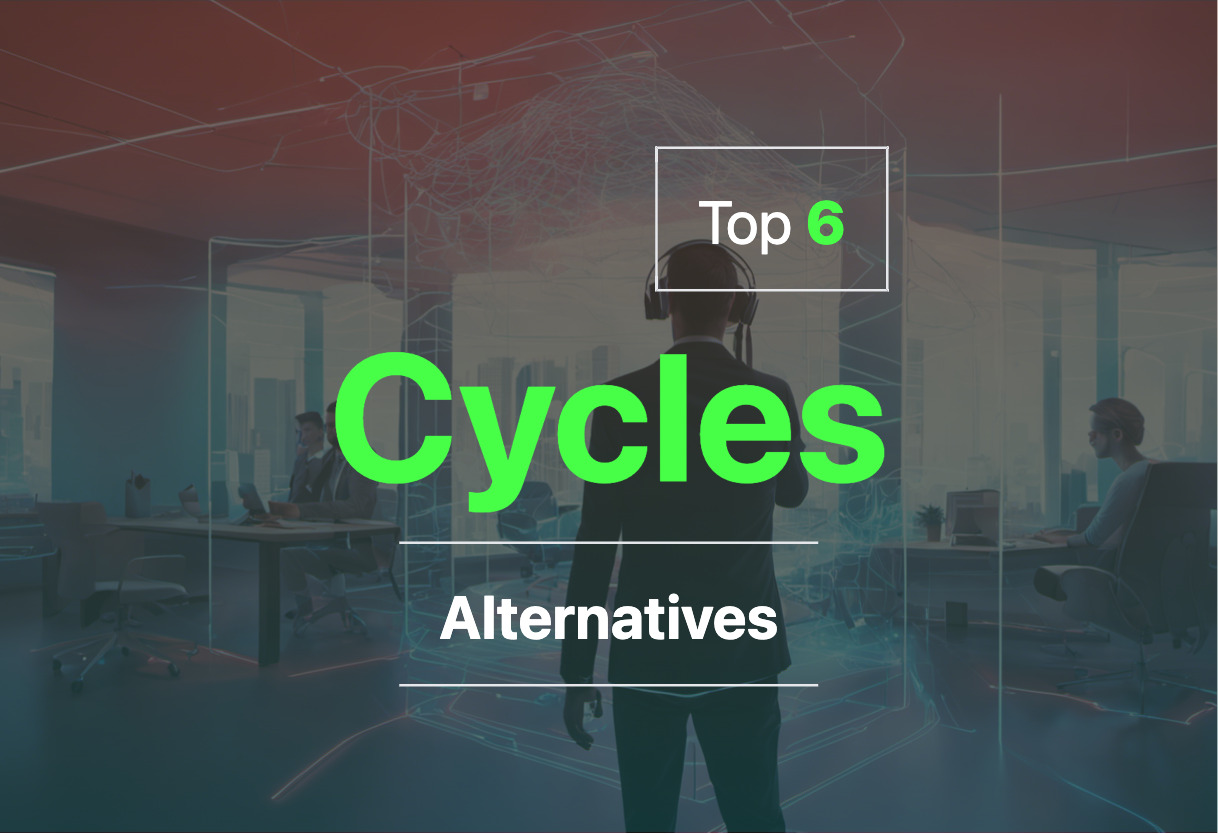
Blender
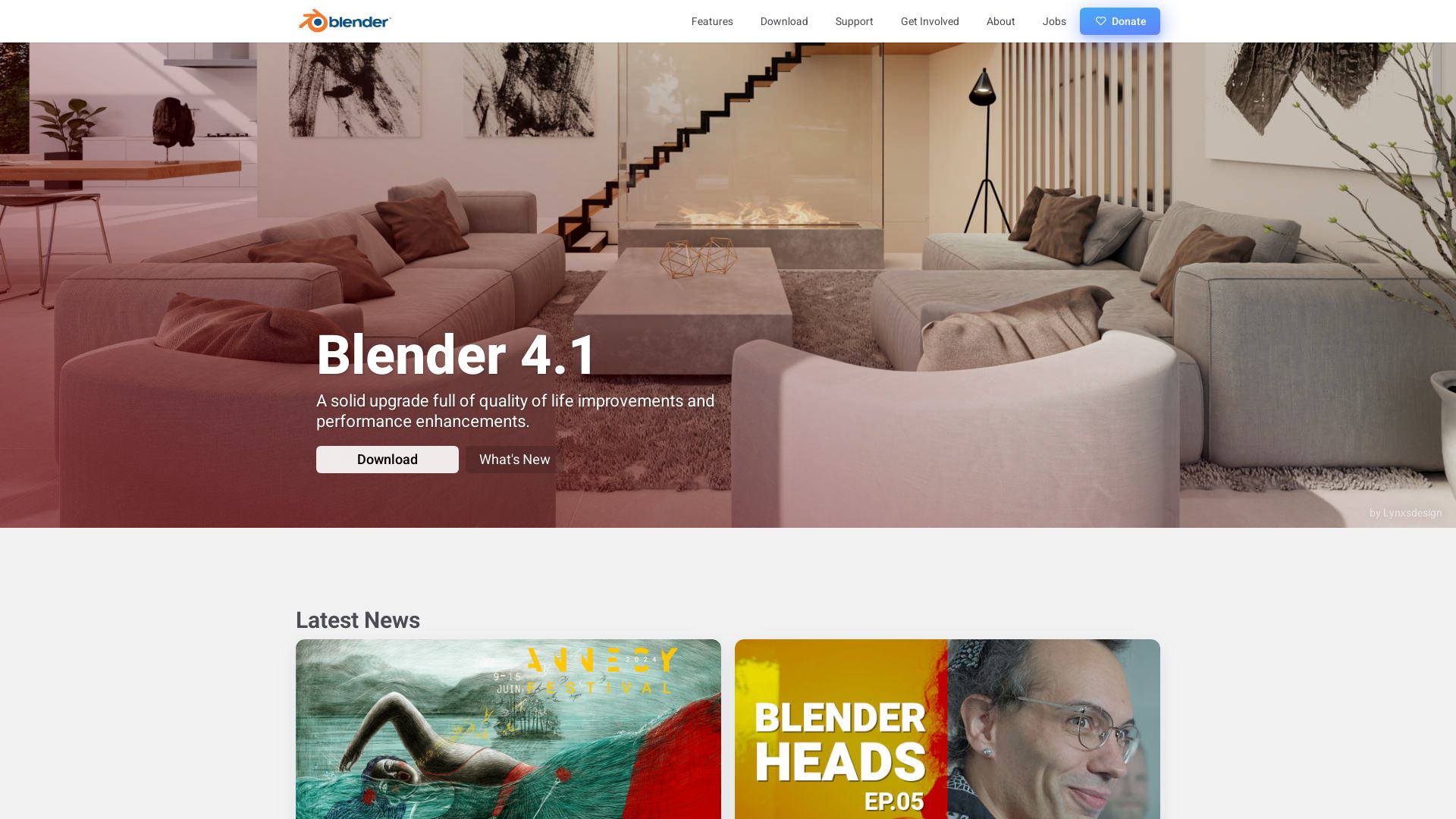
Introduced by Dutch animation studio NeoGeo, Blender is a robust, open-source, 3D computer graphics software toolset, delivering comprehensive functionality since January 2, 1994.
Blender Top Features
- 3D Modelling: High-precision creation and transformation of models.
- UV mapping & Texturing: Defines how textures adhere to surfaces.
- Digital Drawing: Adds artistic effects on models and textures.
- Raster Graphics Editing: Manipulates pixel-based images within the program.
- Rendering: Produces final, polished 2D images and animations from 3D data.
| Top Features | Description |
|---|---|
| Fluid/Smoke Simulation | Simulate and render realistic fluid effects. |
| Soft Body Simulation | Aim for realism with effects like jiggle, wrinkling, and sagging. |
| Video Editing | Create impressive cuts and transitions. |
Blender Limitations
- Depreciated Game Engine: Blender Game Engine was removed in 2.8 release.
- Favoring Eevee Renderer: Blender Internal, an older render engine, was removed in 2.80 favoring Eevee renderer, which could require users to adjust techniques.
Blender Pricing
Blender is free and open-source, making high-quality 3D computer graphics software accessible without any cost.
Blender Use Cases
Use case 1: Animated Films
Blender’s comprehensive suite of modeling, rendering, and animation tools make it a top choice for creating visually striking animated films.
Use case 2: Visual Effects
With its advanced simulation tools, Blender enables the blending of real footage with CG elements for stunning visual effects.
Use case 3: 3D-Printed Models
Blender’s precise 3D modeling, texturing capabilities, and export formats support make it an ideal choice for creating models for 3D printing.
Redshift
Distinguished in the realm of 3D rendering, Redshift stands as a GPU-accelerated renderer designed to meet the rigorous demands of film production and CG artist workflows. Built under the aegis of Maxon and founded by industry veterans Nicolas Burtnyk, Panagiotis Zompolas, and Rob Slater, Redshift made its illustrious debut in 2014 and astounded the industry with its VR interface for architects in 2017.
Redshift Top Features
- Performance optimization on systems with 12 or more CPU threads
- Jitter Node support in Blender, enabling variation in shader attributes
- MatCap shader parameters, bringing illustrative rendering to life
- Flexible Quality-Performance Balance with adjustable RenderView Interactive Preview settings
- Advanced Shading Networks and texturing capabilities for film-grade rendering
| Integration Support | Supports integration with popular CG applications |
| Hardware Compatibility | Support for Apple M1 and AMD GPUs on macOS |
| Software Licensing | Licensing through Maxon, at rates akin to annual maintenance fees |
Redshift Disadvantages
- Requires substantial GPU capacity: For effective rendering, a substantial GPU capacity is essential.
- Dependent on server configurations: Users may need to switch between server configurations which can be time-consuming.
Redshift Pricing
Redshift licenses are provisioned through the Maxon licensing system, with annual charges comparable to regular maintenance costs. It embodies cost-effectiveness without compromising on capabilities.
Redshift Use Cases
Use Case 1
Architectural Visualizations: Redshift’s high-speed rendering powers enable architects to create high-quality visualizations in less time.
Use Case 2
Film Production: With advanced shading and texturing abilities, Redshift can help create stunning final-frame renders for the film industry.
Use Case 3
CG Artists: Redshift offers a complete suite of features that can cater to the diverse needs of CG artists from modeling to texturing.
Unreal Engine
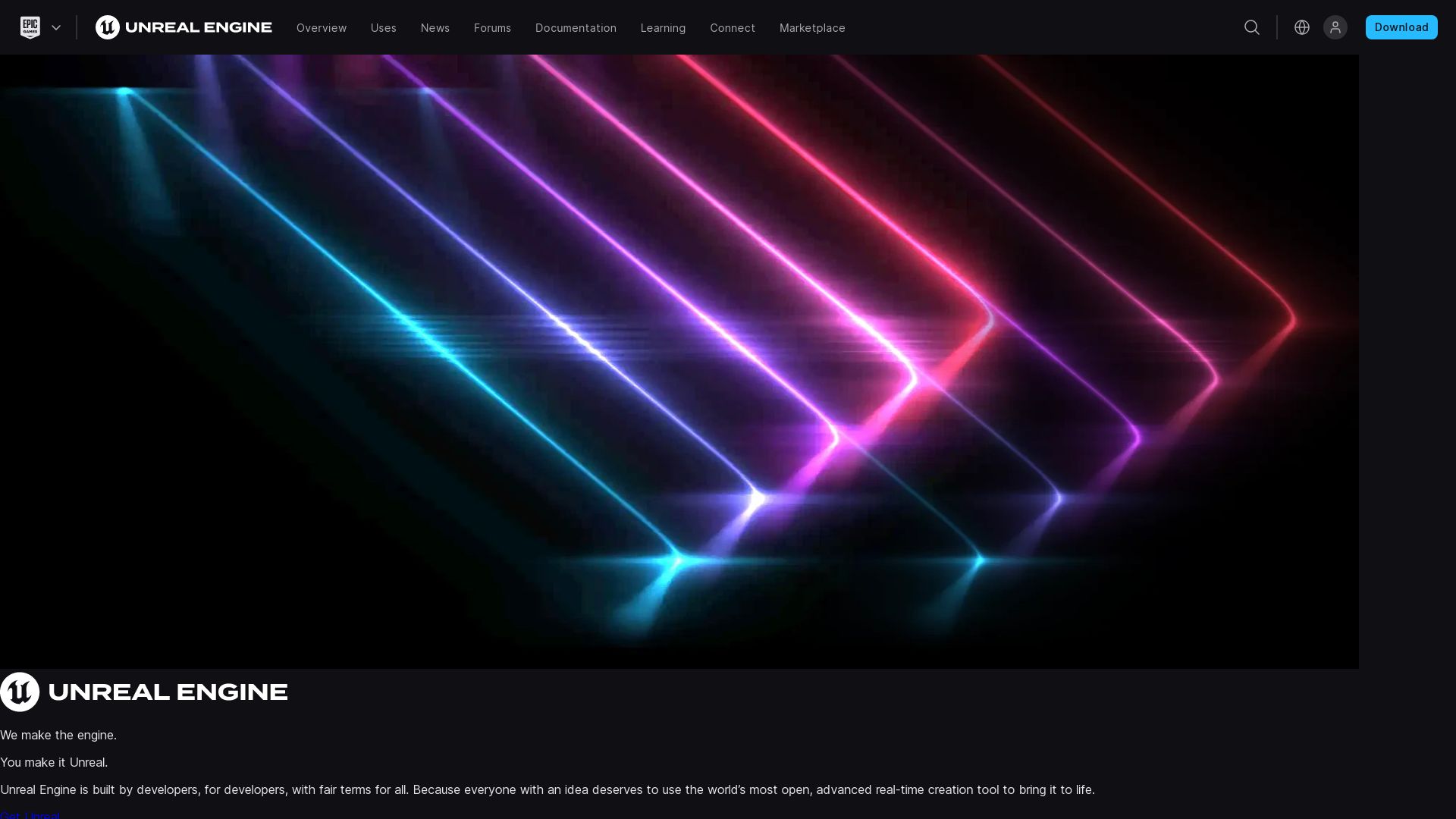
Developed by Epic Games, Unreal Engine (UE) is a highly accomplished series of 3D computer graphics game engines. Originally showcased in 1998 and frequently updated since then, its applications have extended beyond gaming into film and television industries as well.
Unreal Engine Top Features
- Wide Platform Support: UE supports desktop, mobile, console, and virtual reality platforms.
- Progressive Upgrades: With its latest release, UE5, Epic Games continues to innovate and bring new features to the table.
- Real-Time Geometry Operations: The UnrealEd level editor supports real-time solid geometry operations.
- Support for Modders: UE3 was particularly open for modders.
| Feature | Description |
|---|---|
| Unreal Development Kit (UDK) | A free version of UE3’s SDK, supporting creation of iOS games and apps. |
| Unreal Engine Marketplace | Allows users to sell their creations or purchase work of others, offering an impressive 88% share of the revenue generated. |
| UE Free for Education | Unreal Engine is entirely free for use by schools and universities, promoting technology education around the world. |
Unreal Engine Limitations
- Revenue-Based Pricing: Epic charges a 5% royalty on revenues over USD 1 million for commercial use.
- Learning Curve: The primary programming language for developing games is C++. This may present a learning curve for beginners or those unfamiliar with the language.
Unreal Engine Pricing
While basic usage of Unreal Engine is free, there is a 5% royalty charge on product revenues exceeding $3,000 per quarter.
Unreal Engine Use Cases
Use Case 1: Game Development
With its strong real-time geometry capabilities and cross-platform support, Unreal Engine is a one-stop solution for creating immersive games for a variety of platforms.
Use Case 2: Modding
Modders found the engine particularly friendly, with UE3 being highly accessible. This availability has carried over into subsequent versions.
Use Case 3: Film and Television
Unreal Engine’s advanced graphics features have found utilization in the film and television industry, allowing for real-time visual effects and high-quality animations.
Unity

Launched in 2005, Unity is a powerful game development engine, enabling developers to craft impressive 2D and 3D games. Compatible with multiple operating systems, Unity truly stands out in its versatility, facilitating creations ranging from Augmented Reality applications to immersive 3D simulations.
Unity Top Features
- Enables launch of cross-platform games, supporting platforms like Android and iOS
- Adaptable with numerous operating systems
- Offers suite of tools and rendering technology for high-quality game creation
- Rich Asset Store with diverse pre-designed textures and features
- Supports a variety of coding languages – Boo script, Javascript, C#
- Active developer community fostering assistance and feedback
| Feature | Description |
| Extensive range of applications | Enables crafting everything from AR applications to 3D simulations |
| Evolving technology | Improvements to user-friendliness, compatibility, and immersive visual experiences |
| Collaborative tools | Promotes increased adaptability and collaboration among developer members |
Unity Downsides
- New pricing redesign drew backlash, especially from solo, indie, mobile developers
- Potential abuse of per-install fees, including multiple downloads by one user
- Perceived diminished trust between Unity and its users due to unannounced changes
- Sudden pricing shifts could jeopardize developers’ financial sustainability
Unity Pricing
A pivotal change is set for Unity’s pricing with a new model coming into effect on January 1, 2024. Previously offering Unity Plus, Unity now charges developers a fee for each game installation using Unity’s software. Assurances appertain to fraud detection practices to prevent developers incurring costs for pirated copies, while games bought in “standard” markets bear higher fees than “emerging” markets.
Unity Use Cases
Use case 1: Mobile Game Development
Unity encourages mobile game creation, providing developers a versatile platform to craft visually impressive games for Android and iOS platforms.
Use case 2: Augmented Reality/ Virtual Reality Creation
In the realm of AR/VR, Unity thrives, facilitating the creation of highly immersive AR/VR features in games, thereby pushing the boundaries of game development.
Use case 3: Indie Development
Indie developers, inspite of some financial dissent, can utilize Unity’s rich asset store and extensive toolsets to bring to life unique game experiences.
Substance Designer
Renowned as a powerful material-authoring tool, Substance Designer, from Adobe, operates as the backbone for many 3D professionals and enthusiasts ranging from AAA Game Developers to Visual Effects studios.
Substance Designer Top Features
- Version 13.0: Incorporates remarkable update featuring Spline and Path tools for 2D shape manipulation. Plus, ‘portal’ functionality added to the Dot node for enhanced node graph organization.
- Surface creation: Enables creation of unique surface patterns.
A sophisticated element providing pattern scattering and image warping control. - Spline Tools: Houses an impressive set of 25 new nodes for generating, merging, transforming, and rendering splines.
- Path tools: Sports 10 adept nodes for producing paths from grayscale masks and converting them to splines.
- Substance Engine 9: An addition that supports loops repetition within Substance Function Graphs.
- Home Screen: Provides instant access to tutorials, project settings.
| Tool | Function |
|---|---|
| Substance Painter | Specializes in applying textures, layers, and paint to meshes. Allows advanced customization and 3rd-party plugins integration. |
| Substance Designer | The go-to tool for creating meshes/materials. Premieres textures compatible with any engine imported, making it a prevailing tool in the gaming industry. |
Substance Designer Downsides
- Version 13.0 brought the discontinuation of the procedural geometry toolset.
- Model graphs were also removed entirely.
Substance Designer Pricing
Substance Designer offers a license for $149.99 via Steam. In addition, subscriptions span across $19.99/month or $219.88/year through Adobe’s Substance 3D subscriptions.
Substance Designer Use Cases
Use case 1
Substance Designer finds immense application in the gaming industry. It has been used in popular game developments like Deathloop and Assassin’s Creed Valhalla.
Use case 2
For creating intricate tiling textures and rendering them flexible for import in any game engine, Substance Designer takes center stage.
Use case 3
Creating stunning surface patterns and offering dynamic control over pattern scattering and image warping; become possible with Substance Designer.
Sculptris
Sculptris, a digital sculpting tool developed by Pixologic, is a maverick in the world of 3D modeling. This powerful yet user-friendly platform targets both beginners and intermediates, promoting uninhibited artistic creativity.
Sculptris Top Features
- Brush topologies on the fly, pushing the boundaries of what’s possible in the realm of virtual clay modeling.
- Offers a variable topology density based on brush detail with automatic triangulation (tessellation) and real-time decimation. Large brush strokes allow broad surface deformations, while a minute brush can create fine details.
- Possibility to manipulate the mesh independently of the underlying topology. This feature gives artists the freedom to grow parts, fine-tune or erase details without technical constraints.
- Allows modification of DynaMesh, imported models, scan data, CAD files and more. This immense versatility places Sculptris a cut above its peers.
| Unique Tech | Description |
|---|---|
| Tessimation | This ground-breaking feature (a blend of tessellation and decimation) is exclusive to Sculptris, providing an optimized result. |
| Colour Range | Sculptris offers a vibrant color range, making your digital creations more lifelike than ever. |
Sculptris Limitations
- While Sculptris promotes artistic freedom, the lack of technical boundaries can prove challenging for professionals who require stringent controls over their 3D models.
- Also, the software’s innovative tools come with a steep learning curve, which may be daunting to beginners.
Sculptris Use Cases
Use case 1 – Gaming
For game developers, Sculptris presents a fantastic opportunity to craft intricate, detailed character models with an unparalleled degree of artistic freedom.
Use case 2 – Animated Films and Commercials
The software’s vibrant color range and revolutionary modeling capabilities make it ideal for producing high-quality animation assets.
Use case 3 – Industrial Design
With its ability to handle CAD files and tweak designs, Sculptris is instrumental in creating detailed, realistic industrial designs.
Logan Bellbrook
Content writer @ Aircada with a knack for nature & AR/VR/XR. Blogging the intersection of tech & terrain.



